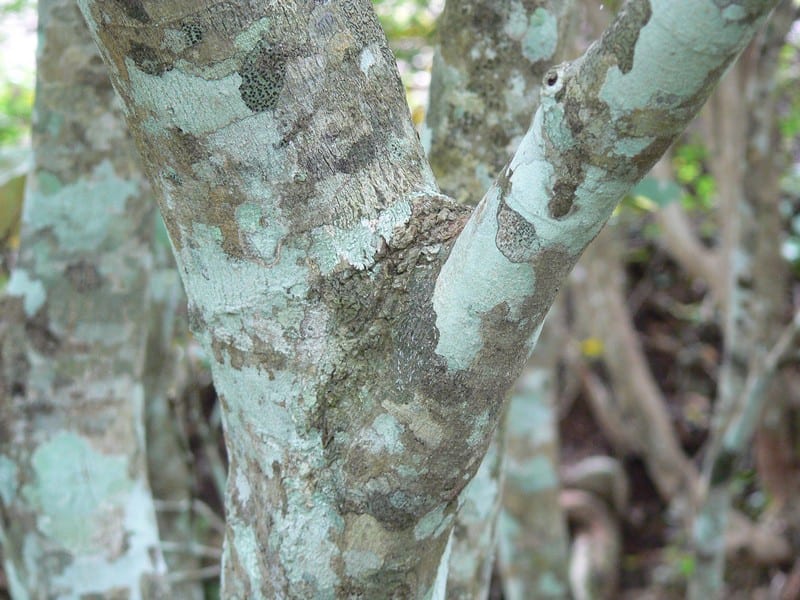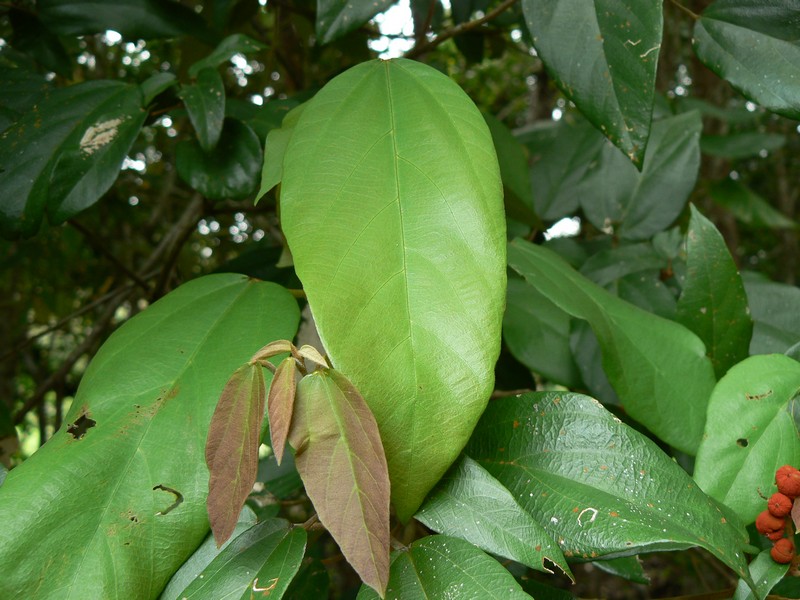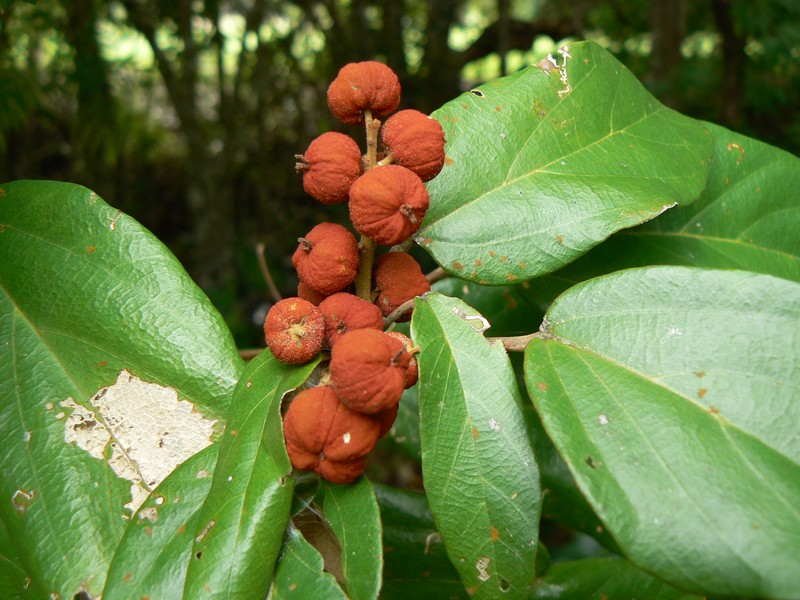Red kamala
Mallotus philippensis, Fam. Euphorbiaceae






A bushy, shrub or small tree to approximately 20m, depending on growing conditions.
| Weed Category: | |
| Weed: | No |
| Form or habit: | Shrub, Small tree |
| Family: | Euphorbiaceae |
| Leaf: | Simple Alternate Ovate to lanceolate, 6-20 x 4-10cm. Apex long-tapered, base rounded, margins entire, upper surface green and hairless, lowers surface grey-green and hairy with numerous tiny red glands; often with two raised glands at the base on the upper surface; 3 prominent veins. Petiole 2-5cm long, slender with minute hairs. |
| Flower conspicuous: | Inconspicuous |
| Flower colour: |
Yellow, Brown |
| Flower description: | Yellowish brown flowers, 1-3mm long, on racemes (clusters) up to 6cm, dioecious (separate male and female plants). |
| Fruit conspicuous: | Conspicuous |
| Fruit colour: |
Red |
| Fruit: | Dry |
| Fruit description: | A capsule, globular with 3 lobes, 6-9mm diameter. Powdery red glands cover capsule. 2-4 black brown seeds 3-5mm long. |
| Habitat: | Beach scrub, gallery (riverine or riparian) forest, littoral rainforest, open forest, vine thicket, woodland. |
| Distribution | Cape York to Hunter region of NSW. |
| Food source for: | Fruit are eaten by Lewin’s honeyeater and figbirds. |
| Toxicity: | Potential allergen |
| Origin: | Australia; South East Asia extending to Asia. |
| Notes: | The fruit produces the golden red dye “kamala” which is used for dying silk. This powder is also used in India to treat skin conditions. The seeds produce a thick, yellowish brown oil or semi-solid fat which in India is used as a substitute for tung oil in fast drying paints and varnishes. |
| Information sources: | Beasley J. (2009) Plants of Cape York., Melzer R. & Plumb J. (2007) Plants of Capricornia. |